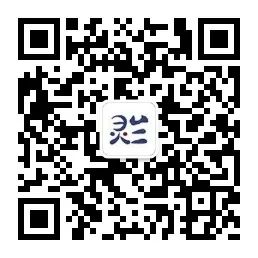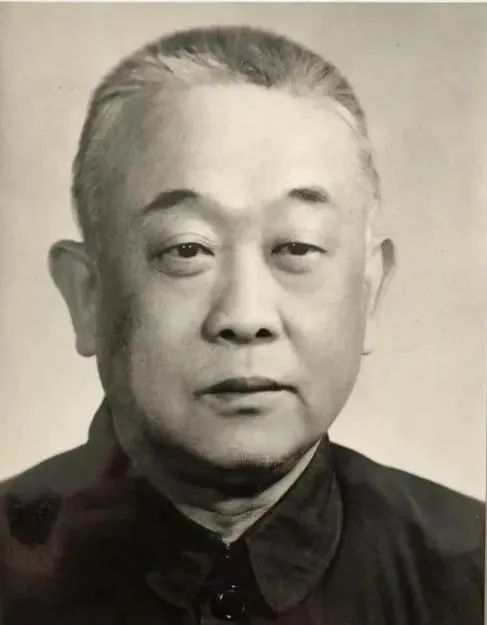
Chinese Medicine Friends Association Issue 3241
One issue daily, accompanying the growth of TCM practitioners
IIntroduction:Mr. Guo Shikui has made significant contributions to diseases of the heart and chest. Academician Chen Keji summarized six experiences of Mr. Guo in treating angina pectoris with powdered formulas, which can be used for our clinical learning.
—This article is approximately1800words, expected reading time5minutes—

Guo Shikui’s Experience in Treating Angina Pectoris with Powdered FormulasAuthor/Chen Keji
|
|
Guo Shikui, 1915~1981, a native of Beijing, dedicated his life to the research of TCM and herbal medicine in the prevention and treatment of coronary heart disease. He developed theories on invigorating blood circulation and resolving blood stasis, and created famous formulas such as Coronary Heart Formula No. II, Wide Chest Pill, and Wide Chest Aerosol.He authored:《Selected Literature on Invigorating Blood and Resolving Stasis》、《Diagnosis and Treatment of Miscellaneous Diseases》等。 |
Mr. Guo Shikui, through long-term practice in the prevention and treatment of coronary heart disease, accumulated rich experience. He is skilled in using methods such as invigorating blood circulation, resolving blood stasis, and warming and promoting Qi to treat angina pectoris and myocardial infarction. For moderate to severe angina pectoris, in addition to using decoctions for syndrome differentiation treatment, he often employs powdered formulas, which are effective and convenient for patients to take.
The powdered formula prescriptions developed by Mr. Guo for alleviating angina pectoris are characterized by their unique formulation and are categorized as follows.
1. Invigorating Blood and Resolving Stasis Powder
Used for blood stasis pain. Symptoms include stabbing chest pain, pain in a fixed location, wiry pulse, purple or dark tongue with stasis spots, and a generally robust physique.
1. Xuejie Powder: 1.5 grams of Xuejie (Dragon’s Blood), taken in 2 doses.
2. Ruyue Powder: 1.5 grams of Ruyue (Frankincense), 1.5 grams of Mo Yao (Myrrh), ground into powder, mixed well, taken in 2 doses.
3. Ruyue 1.5 grams, Mo Yao 1.5 grams, Xuejie 1.5 grams, Bing Pian (Borneol) 1.5 grams, ground into powder, taken 1 gram each time.
2. Qi-invigorating and Blood-invigorating Powder
Used for Qi deficiency and blood stasis, with a weak constitution and accompanying chest pain. Symptoms include fatigue, shortness of breath, chest pain, thin or weak pulse, and pale tongue.
1. Hongshen Sanqi Powder: Equal parts of Hongshen (Red Ginseng) powder and Sanqi (Notoginseng), taken 1 gram each time.
2. Hongshen Sanqi Xuejie Powder: Equal parts of Hongshen powder, Sanqi powder, and Xuejie powder, taken 1 gram each time.
3. Hongshen powder 1.5 grams, Sanqi powder 1.5 grams, Amber powder 1 gram, mixed well, taken in 2 doses (for those with Qi deficiency and blood stasis accompanied by insomnia).
4. Hongshen Yuanhu Powder: Equal parts of Hongshen powder and Yuanhu (Cyperus) powder, taken 3 grams each time.
5. Hongshen powder 1.5 grams, Sanqi powder 1.5 grams, Yuanhu powder 3 grams, mixed well, taken 2 grams each time (the last two formulas are for those with Qi deficiency, blood phlegm, and Qi stagnation).
3. Qi-regulating and Blood-invigorating Powder
Used for Qi stagnation and blood stasis. Symptoms include chest pain, chest tightness, and a wiry pulse, with a dark tongue or stasis spots.
1. Yuanhu Powder: 3 grams of Yuanhu powder, taken in 2 doses.
2. Guangmuxiang Powder 1.5 grams, Yuanhu powder 1.5 grams, mixed for one day’s dosage, taken in 2 doses.
3. Sanqi Yuanhu Powder: 1 gram of Sanqi powder, 3 grams of Yuanhu powder, mixed well, taken in 2 doses.
4. Aromatic Warming and Promoting Powder
Used for chest pain caused by cold evil stagnation. Symptoms include chest tightness, severe chest pain that occurs with cold exposure, tight wiry pulse, and thin white tongue coating.
1. Dinggui Powder: 1.5 grams of Dinggui (Clove), 1 gram of Rougui (Cinnamon), 0.5 grams of Tanshen (Sandalwood), ground into powder, taken in 2 doses.
2. Chenxiang Powder 1 gram, Gongdian Powder 1 gram, Amber powder 1 gram, mixed for one day’s dosage, taken in 3 doses (for those with chest tightness and chest pain accompanied by insomnia).
5. Warming and Promoting Blood Powder
Used for chest pain caused by cold congealing and blood stasis. Symptoms include chest tightness, stabbing chest pain in a fixed location, pain that occurs with cold exposure, dark tongue, and thin tongue coating.
1. Chenxiang Powder 1 gram, Gongdian Powder 1 gram, Sanqi Powder 1 gram, Amber powder 1 gram, mixed for one day’s dosage, taken in 3 doses.
2. Chenxiang Powder 0.5 grams, Xuejie Powder 1 gram, Amber powder 0.5 grams, Sanqi Powder 1 gram, Bing Pian Powder 0.5 grams, mixed for one day’s dosage, taken in 5 doses.
6. Warming and Promoting Blood Powder
Used for Qi deficiency and blood stasis with cold evil stagnation. Symptoms include fatigue, shortness of breath, chest tightness, chest pain that occurs with cold exposure, wiry pulse, dark tongue, and thin white coating.
Hongshen powder 2 grams, Chenxiang powder 0.5 grams, Xuejie powder 1 gram, Sanqi powder 1 gram, Amber powder 0.5 grams, Bing Pian powder 0.5 grams, mixed for one day’s dosage, taken in 5 doses.
All of the above powdered formulas are taken with warm boiled water in divided doses for one day. They can also be taken temporarily during angina attacks for pain relief.
7. Insights
The use of herbal powdered formulas for treating angina pectoris has advantages such as small dosage, ease of preparation, convenient administration, and rapid pain relief, making them popular among patients and valuable for practical use, warranting promotion.
The prescriptions for powdered formulas developed by Mr. Guo reflect the principle of syndrome differentiation and treatment. As stated in the Su Wen: Bi Lun: “Heart obstruction leads to blocked pulse,” Mr. Guo believes that the direct causes of true heart pain and obstructed heart pain are due to blocked blood vessels, leading to pain. Therefore, he emphasizes invigorating blood circulation and resolving stasis to treat heart pain, which is fundamental to the treatment.
All the aforementioned powdered formulas essentially embody the principle of invigorating blood and relieving pain.
Moreover, since blood “congeals when cold, flows when warm,” Mr. Guo also places great importance on the role of aromatic warming in alleviating angina pectoris, considering it a key aspect of treatment.
The prescriptions for each powdered formula created by Mr. Guo pay close attention to the relationship between Qi and blood, as “when Qi flows, blood flows; when Qi stagnates, blood stagnates.” Thus, promoting Qi helps invigorate blood, leading to the creation of Qi-regulating and blood-invigorating powders; also, since “Qi is the commander of blood,” Qi deficiency leads to blood stasis, hence the creation of Qi-invigorating and blood-invigorating powders; and because “cold Qi leads to blood congealing, warm Qi leads to blood flowing,” warming and promoting blood powders are also created.
In summary, although most powdered formula prescriptions are concise, they are rigorously formulated, addressing both the root and the branch, and despite the small dosage, they are remarkably effective.
—END—
It is difficult for children to take medicine; these powdered formulas can be used.
Needle techniques for treating angina pectoris, with case studies and true accounts (including needle rolling techniques)
—Copyright Statement—
-
This article is excerpted from Chinese Medicine Journal, Issue 10, 1983丨Author/Chen Keji丨Editor/Zhang Chunyu丨Proofreader/A Chen, Juye
-
This article copyright belongs to the rights holder. For learning and exchange purposes only, please do not try the medicine at will.
Scan the QR code belowFollow us
Reply “Song of the Classics” to obtain essential TCM verses

How are you and the article? Click on “Like”!



